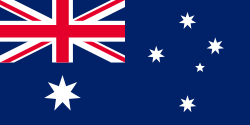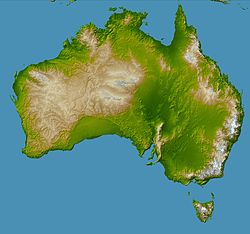
The following outline is provided as an overview of and topical guide to Australia:
Contents
- General reference
- Geography
- Environment
- Regions
- Demography
- Government and politics
- Elections in Australia
- Political parties in Australia
- Federal government of Australia
- Military
- Foreign relations
- International organisation membership
- Law and order
- State and territory governments
- Local government
- History
- History of states
- Culture
- Economy and infrastructure
- State economies
- Education
- States education
- Religion and belief systems in Australia
- Sport
- See also
- References
- External links
Australia , officially the Commonwealth of Australia, is a country comprising the mainland of the Australian continent, the island of Tasmania and numerous smaller islands. It has a total area of 7,688,287 km2 (2,968,464 sq mi), making it the sixth-largest country in the world and the largest in Oceania. Australia is the world's flattest and driest inhabited continent. It is a megadiverse country, and its size gives it a wide variety of landscapes and climates including deserts in the interior and tropical rainforests along the coast.
The ancestors of Aboriginal Australians began arriving from Southeast Asia 50,000 to 65,000 years ago, during the Last Glacial Period. By the time of British settlement, Aboriginal Australians spoke more than 250 distinct languages and had one of the oldest living cultures in the world. Australia's written history commenced with Dutch exploration of most of the coastline in the 17th century. British colonisation began in 1788 with the establishment of the penal colony of New South Wales. By the mid-19th century, most of the continent had been explored by European settlers and five additional self-governing British colonies were established, each gaining responsible government by 1890. The colonies federated in 1901, forming the Commonwealth of Australia. This continued a process of increasing autonomy from the United Kingdom, highlighted by the Statute of Westminster Adoption Act 1942 , and culminating in the Australia Acts of 1986.
















